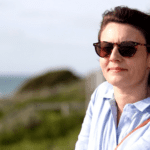A Curtin University academic says the lack of ‘critical discourse’ about public art in Western Australia is to blame when statues and public sculptures fall flat.
Darryn Ansted is Co-ordinator of Painting at Curtin’s School of Design and Art – one of the state’s handful of permanent, full-time jobs specifically designed to be undertaken by an artistic painter.
In Awkward politeness: public artwork in Western Australia and critical discourse, Dr Ansted spotlights several issues that hold public art back in WA.
“It’s too simplistic to say all public art in Perth is terrible or it’s all wonderful,” Dr Ansted told Curtin News.
“It’s really hard to draw conclusions.
“That’s why it’s a hard field to improve.”
 Dr Ansted says that when mediocre public art rears its head, it is all too easy to blame the government agencies that commission it.
Dr Ansted says that when mediocre public art rears its head, it is all too easy to blame the government agencies that commission it.
“Many of the things in the public art scene are working relatively well,” he said.
“It’s not like (modern WA is) coming from a place steeped in tradition and representation that have carried down and formed an image of where we’ve come from and where we’re going.
“We’re relatively very new and struggling to find an image, and often contracting out that job of finding an image.”
PERCENT FOR ART
Dr Ansted’s paper points out that opportunities for commissioning public art – such as through the government’s Percent for Art scheme – have expanded greatly over the past 10 years.
Percent for Art quarantines a small proportion of a public building’s construction cost for expenditure on art associated with the project.
While such expansion was welcome, Dr Ansted noted that critical discourse over public art had improved only slightly in the past decade.
He also said that public art incorporated into government buildings ran the risk of being ‘tacked on’ to the end of projects.
“What tends to happen is that because public art is often an afterthought in government projects, it manifests as something the project needs to address – such as when the building needs more shade,” he said.
“So the artist gets the brief to make a sculpture or installation but it has to provide shade or seating for example.
“You get these strange artworks that are really more part of the architecture but done by the artist – which doesn’t necessarily do either the art or the architecture any good.”
Dr Ansted said that when art was reduced to a function of providing shade or seating, or advertising a feel-good message, it followed a more functional than artistic agenda.
RULE OF THUMB
“The one rule of thumb, looking at a lot of public art around the world, is that the best work comes when it is an organic extension of the artist’s studio practice,” he told Curtin News.
“The best case scenario always seems to be when artists have a really rigorous and diverse studio practice where what they make or sculpt or paint develops and grows, and grows, and grows into a kind of bigger physical form.
“In such cases, the artist has been able to ‘trial and error’ their concepts so that when the artist comes to a public space they can walk right in and it is only a small increase in magnitude and conceptual breadth from what they were already doing.”
Dr Ansted said the benefits of an organic approach were highlighted in a recent review of a Percent for Art-like program that operates in Queensland.
That review of the sunshine state’s ‘Built-in’ policy also said the lack of an overarching vision for public art was a problem.
Dr Ansted said the finding was of great significance to Western Australia.
Another recommendation of the Queensland review – appointment of a state curator – could help elevate debate and moderate the aspirations of all participants in the commissioning process if implemented in WA.
Giving artists greater autonomy and responsibility to achieve the project vision, alongside more critical discussion at every level, could also benefit the Percent for Art scheme, Dr Ansted concluded.
Photography: Sam Proctor
[youtube width=”560″ height=”345″]http://www.youtube.com/watch?v=PSiVO5KCxkE[/youtube]



